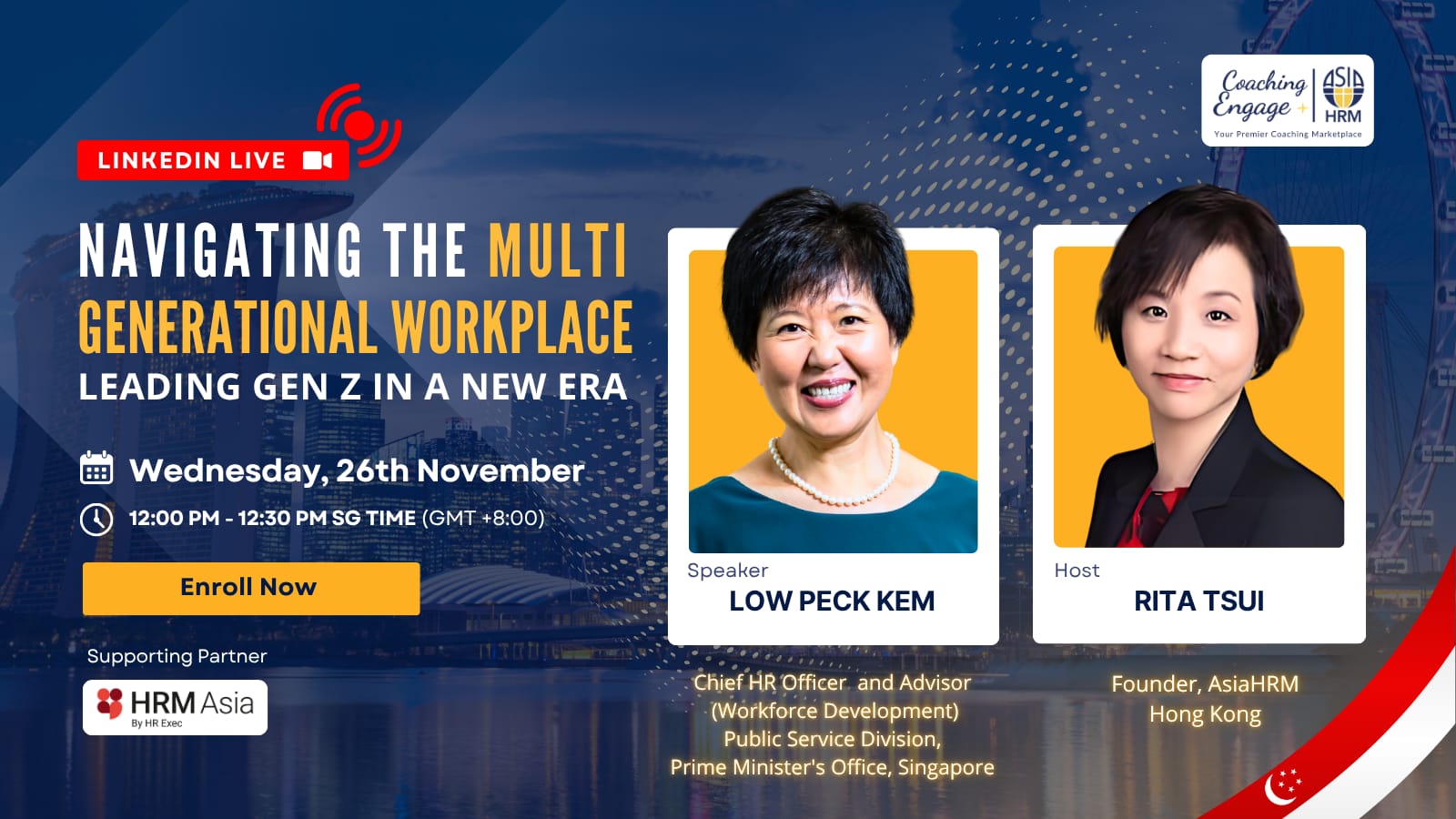Bridging the DEI perception gap in Asia-Pacific workplaces
- Josephine Tan

Diversity, equity, and inclusion (DEI) have become central to the corporate agenda across Asia-Pacific. Yet, a recent report by TDC Global revealed a striking disconnect between how leaders and employees perceive progress in DEI efforts.
In this interview with HRM Asia, Sarah Liu, Founder and Managing Director of TDC Global, delved into the findings of the DEI Deep Dive Report 2024, and offers insights on the evolving DEI landscape in the region.
What were the most surprising findings from the DEI Deep Dive Report for you, and how do you see the DEI landscape evolving in the Asia-Pacific region over the next few years?
Liu: There were several findings that were very surprising, the first was the significant difference in how leaders and employees view their workplace’s progress on DEI. In the Asia-Pacific region, nearly 40% of DEI managers believe they are making strides in their DEI journey. However, one in five employees feel that their workplace has not even begun addressing DEI.
This highlights a disconnect between management’s perception and employees’ experience. Managers and business leaders should regularly check in with their employees, communicate the DEI initiatives being implemented, and listen to their feedback. Rather than assuming employees are aware, it is important to recognise that this is often not the case in many workplaces, as our research shows.
There was also a difference in what DEI-related support managers and employees find most helpful. Across Asia-Pacific, both managers and employees hold a preference for interactive DEI training and in-person support. However, employees rate all forms of support as more helpful than managers do, indicating that employees value this assistance more. The risk here is that if managers do not understand the impact of DEI initiatives on their people, they may reduce or remove them without considering the harm done to employee experience and engagement, which can lead to higher rates of turnover.
Lastly, it was interesting to see how consistently respondents across Asia-Pacific predicted that DEI investment would either increase or remain the same over the next 1-2 years. This is especially notable considering the economic timing of our survey and the recent backlash DEI has been receiving overseas in places like the US.
Overall, 61% of respondents in Asia-Pacific expect DEI investment to rise, with Japan leading at 78% and Australia trailing at 59%. In the long run, organisations that cut DEI investment might face a competitive disadvantage, as less than 5% of employees anticipate a decrease in investment over the next couple of years and, therefore, will prefer committed employers who invest in DEI.
Our report suggests that regions in Asia-Pacific newer to their DEI journey are likely to ramp up investment, as many employees within these countries have predicted an increase in investment over the coming years, particularly in Japan. Conversely, Australia, which is more mature in its DEI journey, might start to fall behind due to signs of stagnation thanks to recent overseas pushback on DEI and rising complacency. This indicates that the DEI landscape across Asia-Pacific is likely to shift at a rapid pace, and leaders need to be vigilant to keep up with changing demands.
The report highlights budget constraints as a significant barrier to effective DEI implementation, despite widespread recognition of its commercial value. Given the current economic climate, how can organisations build a compelling business case to justify increased investment in DEI initiatives?
Liu: When it comes to investing in DEI as an organisation, investments do not have to be huge. Making improvements in DEI is about getting all the same things done right to benefit the bigger picture. This can include taking complaints and employee feedback seriously and encouraging employees to voice any DEI questions they may have. Whether they support initiatives or not, every employee’s voice deserves to be heard and taken into consideration.
DEI initiatives can start small and do not necessarily have to be monetary investments. When done right, DEI can bring tangible value to an organisation by improving operational efficiency, employee retention, and customer retention. On the flip side, the cost of doing nothing can yield significant losses in these areas.

“Making improvements in DEI is about getting all the same things done right to benefit the bigger picture.” – Sarah Liu, Founder and Managing Director of TDC Global
When it comes to employee retention, our research found that almost half of workplaces say employee engagement and retention are critical business issues they want to address this year. DEI is the key to helping with this retention, as a study by Harvard Business Review found that organisations with strong DEI initiatives see a 50% reduction in turnover and a 56% boost in job performance, which contributes to operational efficiency.
In terms of customer retention, the Ipsos Global Trends 2021 report found that an average of 70% of respondents say they buy from brands they believe reflect their own principles, indicating that aligning with customers is more important than ever for business success. In some Asia-Pacific countries like Australia, organisations without a clear DEI stance even risk losing government contracts. This demonstrates that DEI is not just important—it is a business imperative.
How can organisations create a supportive environment for DEI champions within their workforce, and in your opinion, what specific leadership qualities are essential for driving successful DEI initiatives in this region?
Liu: Organisations can create a supportive environment by creating more DEI champions, especially among allies. Often, workplaces disproportionately rely on employees who fit within a minority group to take on these ‘DEI champion’ roles, while not targeting most of the workforce for whom DEI initiatives do not have as much of a direct impact. Business leaders should be educating employees who fall within this majority on how to be an ally and ensuring employees within this majority group are also positioned to become DEI champions alongside their diverse colleagues.
Leadership teams can support their DEI champions by holding themselves accountable through KPIs. By making DEI leadership a performance attribute which contributes to monthly KPIs, workplaces are not solely relying on DEI champion employees to foster an inclusive environment. For DEI to successfully contribute to business performance and become a lever for achieving core objectives, it should be embedded from top to bottom, at every level of the organisation.
READ MORE: Why your organisation should be prioritising DE&I
When it comes to the leadership qualities essential to driving successful DEI initiatives, DEI champions need to create action through amplifying and advocating. Across the more DEI-mature areas of Asia-Pacific like Australia, we need to move dialogue away from simply bringing attention to DEI and instead focus on the impact we can create both inside and outside our workplaces. It is no longer enough to acknowledge that more needs to be done to improve DEI; practical action needs to be taken. Many business leaders have the right intention when it comes to their DEI advocacy yet have no real impact to show for it.
Business leaders and DEI champions need to create opportunities for diverse employees by amplifying their presence and giving them access to the networks they need to succeed. Employees should also be advocated for both internally and externally. This could involve putting them forward for promotions or adjusting their working schedule or environment to fit their needs, whether this be a mother who needs to pick up her children from school, an employee who is part of a religion which encourages prayer at specific times of the day, or an employee with sensory issues who needs a break from the office.
DEI in the workplace is not just about advocating for a certain minority, it is about ensuring that every employee has equitable access to a flexible working environment which fits their needs, is inclusive and welcoming, and encourages collaboration no matter their background. Workplaces that achieve this unlock a competitive talent advantage through attracting and retaining the best people, who are engaged and committed to the organisation’s success.
For more news and analysis on the latest HR and workforce trends in Asia, subscribe to HRM Asia and be part of the region’s largest HR community!






